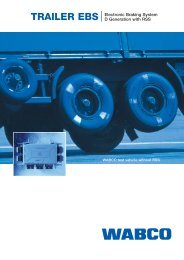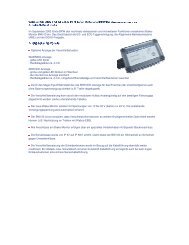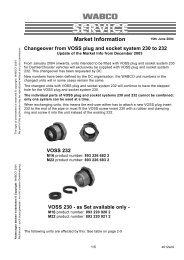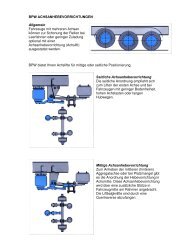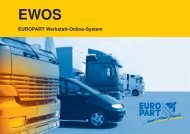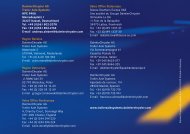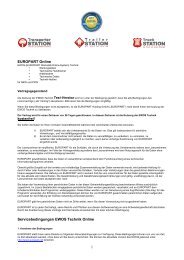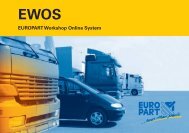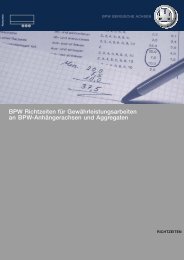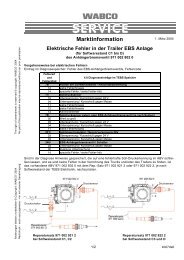Brosch. Trailer EBS (E) - wabco inform
Brosch. Trailer EBS (E) - wabco inform
Brosch. Trailer EBS (E) - wabco inform
You also want an ePaper? Increase the reach of your titles
YUMPU automatically turns print PDFs into web optimized ePapers that Google loves.
<strong>EBS</strong> 23<br />
Compatibility of<br />
Towing Vehicle and <strong>Trailer</strong><br />
Fig. 16: Example for the Position of Vehicles within<br />
the Compatibility Band<br />
The worst case would prevail if the trailer<br />
also had a high response pressure. This<br />
example shows that wear problems are<br />
not so much caused by different gradients<br />
in the individual vehicles’ characteristics<br />
within the compatibility band, but<br />
mainly by excessive differences in response<br />
pressures.<br />
Additional problems may be caused by<br />
the towing vehicle and its trailer having<br />
had different types of brakes fitted. More<br />
and more towing vehicles have disk<br />
brakes, whilst most trailers still have drum<br />
brakes. Since disk brakes show less thermal<br />
fading than drum brakes, their brake<br />
force falls less rapidly at high temperatures.<br />
Extended application of the brakes<br />
will then cause the braking energy to be<br />
increasingly transferred from the trailer<br />
with its drum brakes to the motor vehicle<br />
with its disk brakes.<br />
For this reason, one major objective of<br />
<strong>EBS</strong> development was to achieve a higher<br />
degree of synchronization for tractortrailer<br />
combinations, i. e. to improve their<br />
compatibility.



